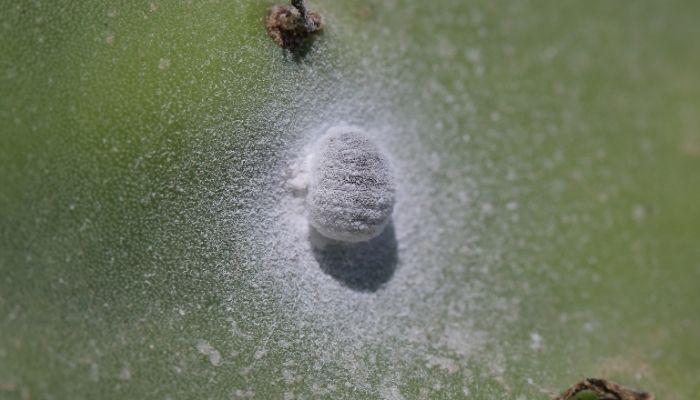Is Carmine Vegan and Cruelty-Free?
Carmine products are neither vegan nor cruelty-free. Products with carmine as an ingredient that claim to be vegan are sorely mislabeled!
Many controversies surround Carmine – the red pigmentation found in various food and beauty products. It may be because of how this red dye is made, or perhaps some people just hate it. You can’t tell for sure.
Questions have been put forth as to whether carmine is vegan and if it’s suitable for vegans.
While vegans can still use carmine-colored cosmetics and snacks, carmine itself is animal-derived. Its production involves crushing insects to extract their red pigmentation.
Products with carmine as an ingredient that claim to be vegan are sorely mislabeled! Bugs are insects, which are animals, so do you need a more resolute answer?
What Is Carmine?
Have you thought about all the red lollipops, ice cream, candy, and even baked goods that you consume? Care to know where they get this delicious red hue from? Chances are, they are made from carmine.
The red food colorant is also referred to as a cochineal extract. Cochineal is derived from the Dactylopius Coccus Costa species of insects.

Peru and the Canary Islands are the most well-known regions where cochineal bugs are harvested. They survive on prickly cacti and are well-known for their red pigmentation.
Here is an interesting fact! It takes roughly 70,000 cochineal insects to make a pound of dye! This shows just how these insects are harvested on a hefty scale.
Carmine dates back to as early as the 1500s. Aztecs used cochineal insects for dyeing fabrics. We can understand insects’ use to make dyes back then, since resources were limited, but what is the use for it today? There are better methods.
The purpose here is to make packaged edibles look as vibrant as possible, so I don’t see the need to kill tens of thousands of insects to do so. There are easier ways to color food today. Besides, carmine doesn’t come with any reputable health benefits.
Products Containing Carmine
Carmine can be found in foods and various products that require a red pigment. Let’s list a few food products that use carmine:
It’s important to always check for the list of ingredients on any packaged food, drinks, or cosmetics if you want to avoid this additive.
- Betty Crocker Red Velvet Cake Mix
- Yoplait Yogurt
- Werther’s Cinnamon Flavored Hard Candies
- Twinlab’s Ripped Fuels
- Hot Pocket Snackers
Check for a list of products that use carmine colorant here.
How Is Carmine Produced?
First, the female cochineal insects are harvested, sun-dried (heated or even boiled), then crushed.
Next, they are dissolved (one of the methods) in an acidic solution to produce carminic acid. It creates a bright red dye that is easy to alter using borax solutions and other agents.
The final pigment is called carmine extract. It’s used as a “natural color” in a myriad of beauty and food products.
Note that, even after combining the colorant with solutions and acids, there still are traces of insect proteins in the beauty and food products you use.
Is Carmine Cruelty-free?
After understanding how carmine is produced, it is a no brainer. While its not “tested” on animals, but anything produced by killing animals can never ever be cruelty free.
It is as far from cruelty-free it can be.
Is Carmine Vegan?
You must have been waiting to have this question answered.
The answer is NO. Carmine is not in any way vegan. The whole point of veganism is protecting animals and reducing their suffering while still leading normal lives.
Since carmine production involves the crushing of bugs, we cannot label it a vegan extract. No vegan rules support the crushing of bugs whatsoever.
Note that any products claiming to be “cruelty-free” or claiming to be a “natural” beauty product can still use carmine for pigmentation. It’s essential to be keen on the ingredients list.
How Does Carmine Appear On the Ingredients List?
Note that the FDA allows companies to not disclose ingredients with under 1% concentration in their formulas.
Thus, cosmetic companies may include carmine in their formula and not explicitly state it in their ingredients list if the concentration is less than 1% of the whole recipe.
There are also loophole phrases that some of these manufacturers adopt. For instance, if your cosmetics use terms such as “natural dye”, “fragrance”, or “natural pigments”, there is a possibility that the brand contains carmine.
How do you recognize carmine in an ingredients list, then?
It can be listed using any of these names and phrases:
“Carmine”, “Carmine (Coccus cactil)”, “Carmine 5297”, “Carmine Ultra fine”, “Carminic Acid”, “Natural Dyes”, “Natural Pigments”, “Crimson Lake”, “Cochineal Extract”, “C.I 75470”, “Natural Red-4”, “E120”, “Carminic Acid Lake”, or “B-Rose Liquid”.
If you are vegan and want to shop for carmine-free cosmetics, we have a list prepared for you that’s 100% vegan.
None of the products here contain carmine pigments.
Are There Risks and Side Effects of Carmine Use?
Even in minimal doses, carmine color has been seen to cause bad allergic reactions to some.
This is primarily true for people who are allergic to insect proteins. Reactions can develop immediately after direct contact with lipstick or gel or through consumption and inhalation.
Allergy symptoms may appear as facial swelling, rashes, redness, and wheezing when inhaled. To completely avoid carmine, don’t purchase or use cosmetic products and foods containing red colorants.
As a Vegan, Do I Have Alternatives To Carmine-Pigmented Products?
Yes, there are three more ways to color food and cosmetics –
1. Artificial FC&C and Lake Dyes
This is one of the most popularly used ingredients in the makeup industry. The dyes work brilliantly but beware. Although they claim to be natural, they are not, and they are not appropriate to be included in the “natural” list.
2. Iron Oxides
They have a natural origin, but the dye itself is made from the oxidation of iron. It’s commonly recognized as rust and comes in various reds, yellows, browns, and black powders. Their only drawback is that the ingredient is almost always orangey and warm, and it’s hard to achieve a light color-toned palette with these powders.
3. Fruits and Vegetable Dyes
You know what happens when you leave fruit outside. It turns brown through the oxidation process when a vegetable or fruit pulp is exposed to air. This process is accelerated in warmer climates.The only problem is that these dyes are over-mistaken.
Fruit and vegetable dyes only work in water-based formulations. While most lip and cheek makeup claim to use natural fruit dyes, we’re skeptical about it since they are mostly oil-based.
They may include that fruit formula in their ingredients list, but we don’t believe it’s the only reason behind that dazzling magenta pink. Do you?
If you are vegan or supporter of cruelty-free products, you should be avoiding all the products which have carmine in it and look for alternatives.
